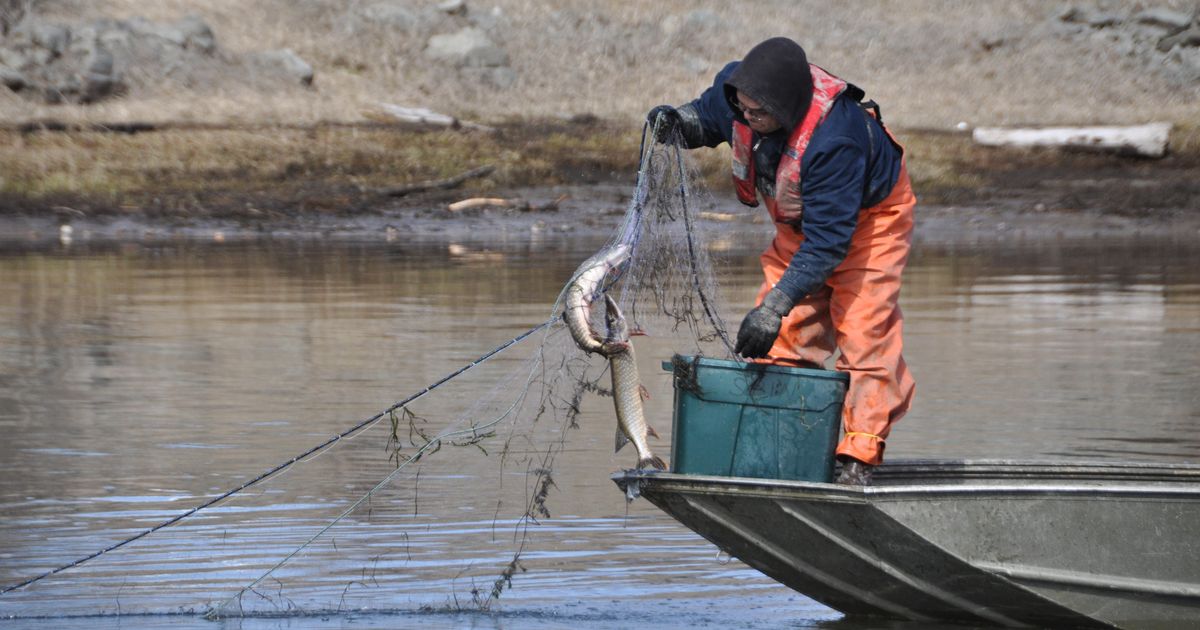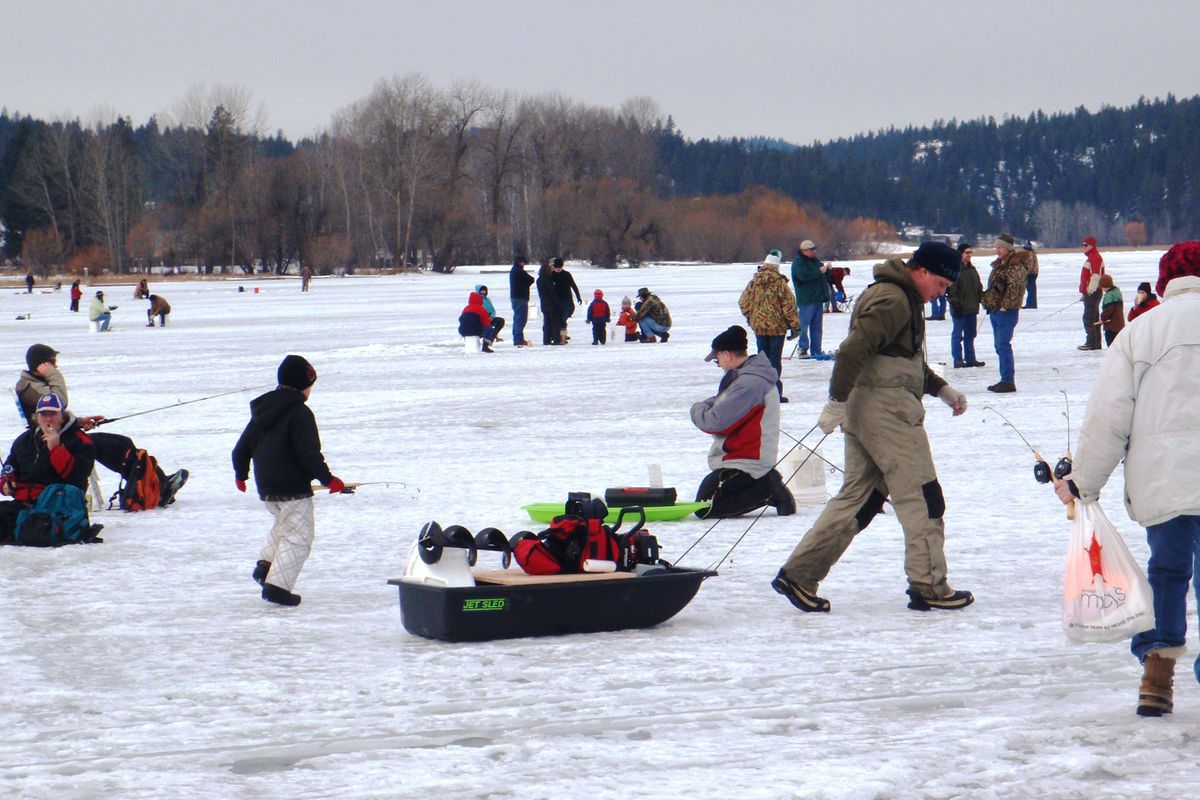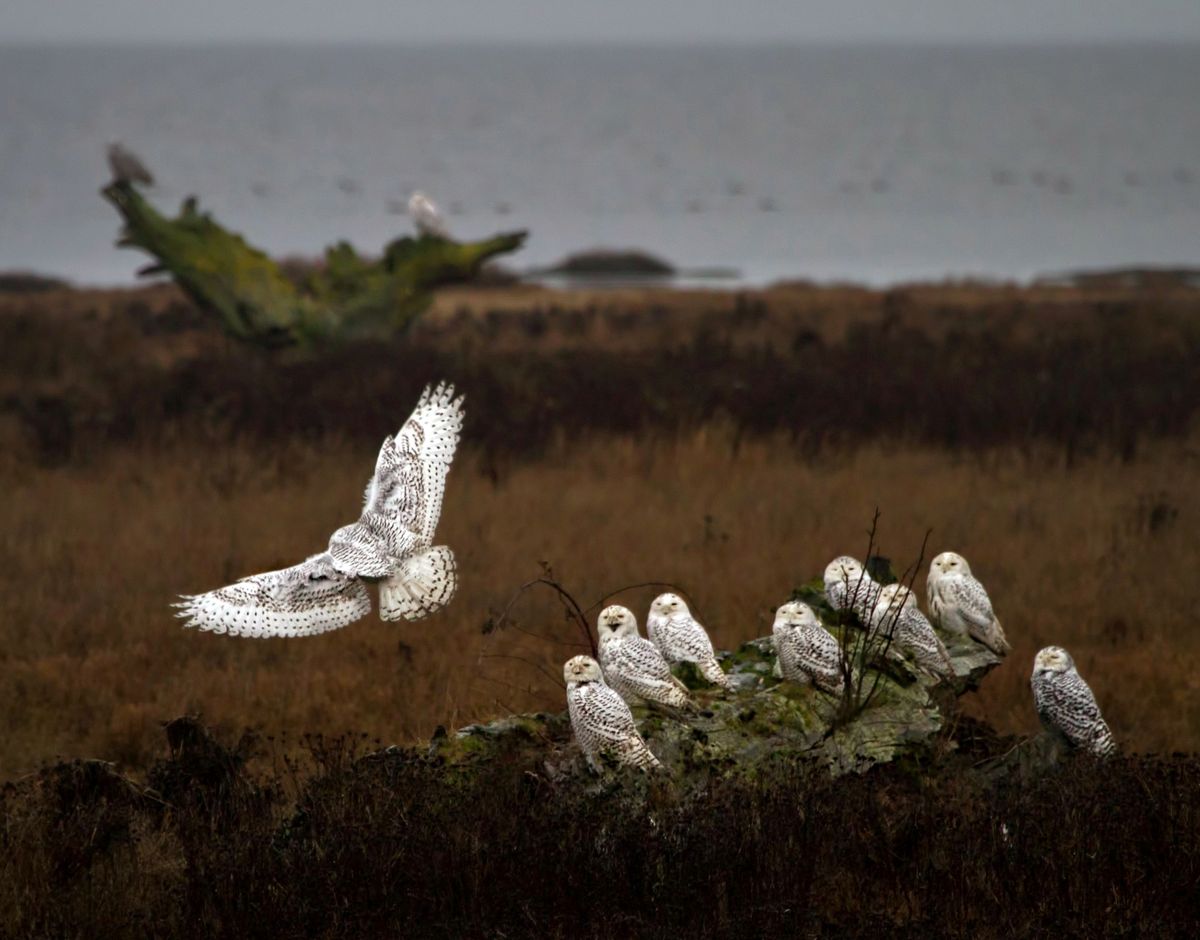2012: A review of the year Outdoors
Public land, wildlife managers had hands full with predators, appeals, tragedies
Birdwatchers and photographers alike took advantage of the huge migration of snowy owls across northern tier of the United States.
The spotlight was on predators in 2012, and so were the nets, traps and crosshairs in many cases throughout the Inland Northwest.
The Spokane Tribe sparked one debate on predator management by proposing a bounty on walleye. Tribal members were asked to help reduce numbers of the non-native fish in Lake Roosevelt by targeting the walleye in their Spokane Arm spawning areas.
“It’s a food pyramid thing,” explained Brian Crossley, the tribe’s fish program manager. “The prey base always has to be higher density than the predator base. Right now, the pyramid is upside down.”
The walleye problem has not been resolved, but Washington state fisheries managers joined with the Kalispel Tribe for a more aggressive effort to draw the line on northern pike invading the Pend Oreille River. Using gillnets, tribal crews hit a goal of removing about 5,700 northern pike – 87 percent of the pike estimated to be in the Box Canyon Reservoir area.
The tribe-sponsored Pikepalooza derbies in May, June and August gave anglers a chance to cash in on catching additional pike from the thinned-out population.
The estimated number of salmon killed by sea lions – the subject of years of lawsuits and millions of dollars on studies and deterrents – was the lowest since the Corps began its extensive observation program in 2003. However, for the first time since government tracking began, sea lions below Bonneville Dam this year killed more sturgeon than salmon, with the marine mammal ranging up the Columbia all the way to The Dalles Dam.
Lake trout continued to be subject to a $15 bounty at Lake Pend Oreille in the apparently successful effort to reduce predation and restore the lake’s kokanee fishery. The bounty on rainbows will end Jan. 1.
Anglers continued to earn big money in the Bonneville Power Administration’s program to reduce numbers of northern pikeminnows in order to preserve more steelhead and salmon smolts migrating down through dams in the Snake and Columbia rivers.
Northeast Washington businesses and hunters took aim at coyotes again this winter to spread a little wealth and give calving livestock and beleaguered white-tailed deer a little more breathing room. Participating hunters checked in 297 coyotes during the Coyote Derby in January and February covering Ferry, Stevens and Pend Oreille counties.
Wolf issues captured the most headlines. Montana opened a new wolf trapping season, trying to duplicate Idaho’s success in curbing the rapid growth of the formerly endangered species.
Even though hundreds of wolves were killed for management in both Montana and Idaho, Washington took the most heat as it resorted to aerial gunning to wipe out the Wedge Pack in northern Stevens County after the wolves had been associated with at least 17 confirmed attacks on livestock. The howl of protest was heard all the way to Olympia, where legislators have promised more scrutiny on wolf management and emphasis on guidelines for ranchers in 2013.
The cost of dealing with the Wedge Pack alone – just one of 12 confirmed or suspected packs in Washington – totaled $76,500. In drawing up the state’s wolf management plan, state wildlife managers estimated they would need about $400,000 a year to manage wolves – and they did in 2012.
The impact of predators was shouldered by hunters on yet another level this year as antlerless elk hunting was not allowed in Idaho Panhandle general elk seasons for the first time in history. This change reaches to the heart of hunting and community traditions in North Idaho. Predation by wolves, cougars and bears was cited as a notable factor in the relatively low numbers of elk – and moose.
Similarly in Washington, general-season elk hunters were restricted to shooting only antlered bull elk throughout Ferry, Stevens and Pend Oreille counties.
At least one predator was more than welcomed to the region. Birdwatchers and photographers seized the opportunity provided by last winter’s “irruption” of snowy owls migrating from the arctic to winter along the northern tier of states.
Public lands managers were challenged on several fronts in the region this year.
Washington State Parks’ funding crisis continued. The Discover Pass required for vehicle access to parks and other state lands fell short of bringing in needed revenues as lawmakers wean state parks from general fund assistance.
The Parks and Recreation Commission plans to seek $27 million from the general fund in the upcoming Legislature with few other alternatives other than shutting down more parks.
Any good news from national parks is overshadowed by two rare tragedies that took the lives of rangers in Mount Rainier National Park:
• On New Year’s Day, Margaret Anderson, 34, a mother of two, was killed by a gunman following a traffic stop.
• On June 21, climbing ranger Nick Hall, 33, slid more than 3,000 feet to his death as he helped rescue four injured climbers who fell on a glacier.
Tragedy also struck recreation groups:
• Kayakers organized by the Gonzaga University outdoors program and Spokane City Parks apparently were ill-prepared for the lethal combination of near-freezing temperatures, cold water and high winds that took the life of freshman Chris Gormley on April 1 at Rock Lake. Three paddlers capsized, including Gormley, who died of hypothermia.
• Skiers pushing the limits of safety in an out-of-bounds run near Stevens Pass stunned the elite skiing community on Feb. 19 as three expert skiers and one snowboarder died in two separate Cascades Mountains avalanches near Stevens Pass.
• Mountain climbers died in a series of unrelated accidents on Mount Baker, Mount Rainier and Mount Hood during one week in June.
National forests tackled land-use issues as they continued to struggle with budget cuts that were crippling recreation programs and trail maintenance.
Idaho Panhandle National Forests had public meetings regarding the revision of its forest management plan, covering a range of issues from fire management to roadless areas and wilderness.
Off-highway vehicle travel plans had rough going on forests in the region. The Colville National Forest had to withdraw its South End Motor Vehicle Project after conservation groups filed an appeal contending the forest was rewarding groups that illegally pioneered new trails where off-road travel had been prohibited.
Motorized recreation groups initiated appeals on travel management planning by the Clearwater and other forests.
The Wallowa-Whitman National Forest withdrew a plan to close up to 3,600 miles of roads to motorized vehicles. Forest Supervisor Monica Schwalbach withdrew the plan in April amid public protests. She was reassigned to another forest.


